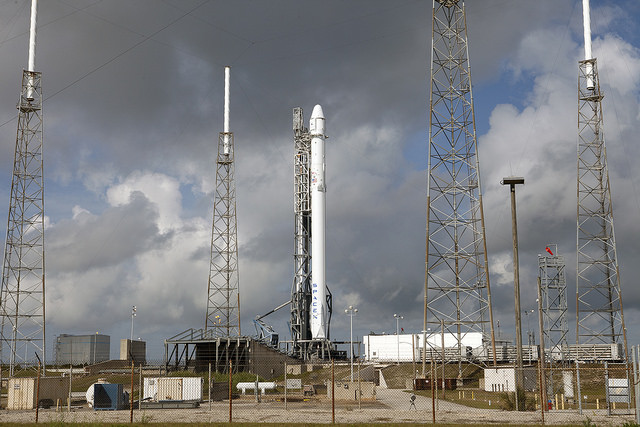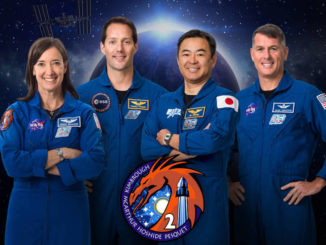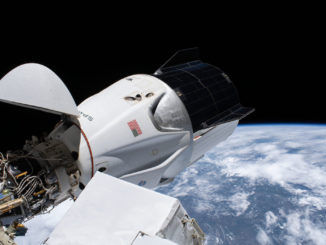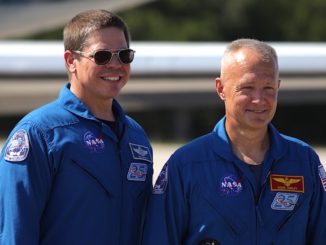
Hazardous anvil clouds approaching from a nearby thunderstorm forced SpaceX to abort the takeoff of a Falcon 9 launcher Monday, delaying the start of an International Space Station resupply mission and a bold attempt to recover the rocket intact on an ocean-going platform.
The liftoff was set for 4:33 p.m. EDT (2033 GMT), but developing thunderstorms southwest of the launch base caught the attention of meteorologists in the final minutes of the countdown. Anvil clouds attached to a thunderstorm encroached within a 10-mile exclusion zone around the Falcon 9 launch pad, and the U.S. Air Force weather officer ordered a hold at the countdown’s three-minute mark.
The rocket only had one second to blast off and fly on course toward the space station, so the hold automatically triggered a launch delay.
The launch team came “just about as close as we could get,” said Mike Curie, NASA TV commentator for the flight.
The SpaceX launch team planned to drain the Falcon 9 rocket of propellant and configure the 208-foot-tall launcher for another try.
The launch time on Tuesday is scheduled for 4:10:40 p.m. EDT (2010 GMT), and forecasters predict a 50 percent chance weather conditions will exceed one of the launch rules. That forecast is slightly worse than the outlook going into Monday’s launch attempt.
Officials will be on the lookout for cumulus clouds and anvil clouds Tuesday, along with the threat of lightning in the area. The forecast calls for overcast skies, southerly winds and a temperature of about 80 degrees Fahrenheit at launch time Tuesday.
The Falcon 9 rocket is awaiting its 17th flight and fourth launch of the year.
SpaceX’s commercial Dragon cargo craft will deploy from the Falcon 9 rocket’s second stage about 10 minutes after liftoff, beginning a two-day trek to the space station. After a series of maneuvers to adjust its orbit to match the path of the 450-ton research outpost, the Dragon will use a laser navigation system to rendezvous with the station Thursday, assuming the launch occurs Tuesday.
Astronaut Samantha Cristoforetti will take control of the space station’s Canadian-built robotic arm to grab the Dragon capsule around 7 a.m. EDT (1100 GMT) Thursday as it hovers just beneath the complex.
Nearly 4,400 pounds of food, experiments and spare parts are stowed inside the Dragon’s pressurized cabin. The capsule’s external trunk section — sometimes used to carry up unpressurized experiment packages — is empty on this mission.
SpaceX has a contract with NASA for 15 resupply missions to the space station, and the upcoming flight is the sixth launch in the series.
The supply ship will stay attached to the space station until late May, when it will detach and fly back through the atmosphere for a parachute-assisted splashdown in the Pacific Ocean, bringing back about 1.5 tons of research specimens and other equipment tagged for return to Earth.
SpaceX plans to use the launch for a secondary objective to recover the Falcon 9’s first stage booster with a vertical rocket-powered landing on a specially-outfitted barge in the Atlantic Ocean.
The landing platform is called an autonomous spaceport drone ship by SpaceX, and a successful touchdown would move the company closer to its goal of fielding a partially reusable rocket, an achievement officials say would reduce the cost of future launchings.
Follow Stephen Clark on Twitter: @StephenClark1.



